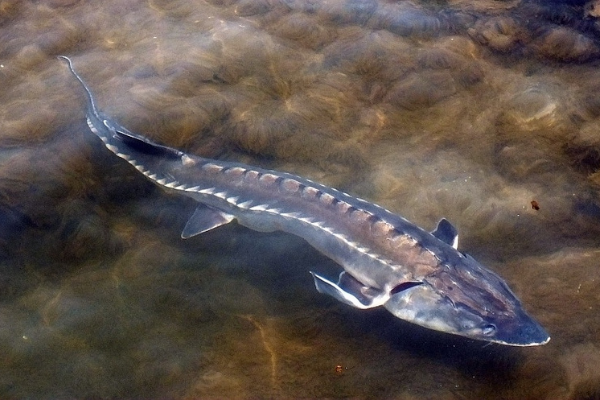The U.S. Fish and Wildlife Service has awarded the Yangtze sturgeon—an exotic-looking freshwater fish found within the upper and middle Yangtze River system in China—Endangered Species Act protections.
Friends of Animals and WildEarth Guardians petitioned the agency several years ago when the species was in decline due to fishing.
Despite conservation efforts such as fishing bans and restocking, populations continued to plummet because of the effects of dams and bycatch. The construction of dams and reservoirs has limited connectivity between spawning and feeding reaches; altered water temperature, water discharge and velocity rates; and changed sediment concentration.
“These magnificent fish have inhabited our planet for more than 140 million years and are worth more than the sum of their parts,” said Michael Harris, general counsel and director of Friends of Animals Wildlife Law Program. “We are thrilled that they now have the strongest possible legal protections.”
The ESA provides numerous benefits to foreign species, primarily by prohibiting activities such as import, export, take, interstate commerce and foreign commerce. By regulating these activities, the United States helps conserve imperiled species across the world.
The Yangtze sturgeon is a large fish—adults can reach up to 4.3 feet in length and weigh as much as 35 pounds. The species has a triangular head, an elongated snout, and large blowholes. Yangtze sturgeons have tactile barbels at the front of their mouths that they use to dig for food, which includes aquatic plants, invertebrates, and small fish. On the dorsal side, Yangtze sturgeons are dark gray, brownish-gray, or yellow-gray in color. The rest of the body is milky white in color.
Yangtze sturgeons are also negatively impacted by industrial pollution, riverbed modification and hybridization with non-native sturgeon,” according to FWS.
FWS also reports that natural reproduction of the sturgeon has not been documented in the wild since 2008 and captive-bred reintroduced sturgeon have lacked the ability to develop gonads and reproduce naturally in the river.
The Yangtze River is the longest river in Asia and serves as a major fishing ground for millions of people. The topography of the upper Yangtze River basin is characterized by mountains of varying heights. This topography makes the upper Yangtze River an ideal place for hydroelectric projects.
Dam construction on the Yangtze River occurs both upstream and downstream of the Yangtze sturgeon’s current range.

